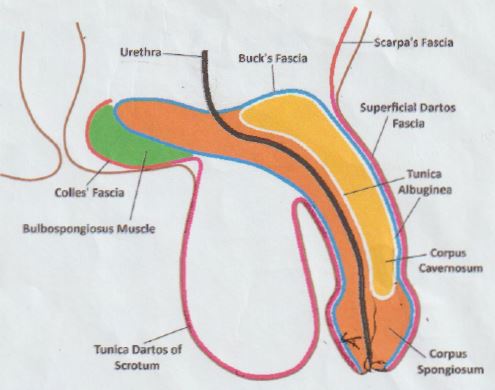
I was told my son has a chordee. Is it serious?
Chordee is an anomaly of the penis comprising excess curvature / bent either downwards or towards the side. The skin is often tight and not retractable to expose the urinary opening (phimosis). This causes a curved erection which may be painful, and spraying of urine when peeing. This wets the underwear or pants when the child is standing to pee. The reported incidence ranges from 1 in 100 to 1 in 1000. Chordee is not life threatening, and is isolated or associated with other anomalies.
What other anomalies can pediatric chordee be associated with?
A chordee may be associated with hypospadias, undescended or absent testis, or anomalies of the penis and scrotum. These should be diagnosed and managed by a paediatric surgeon / urologist.
When is the best time to correct chordee in a child?
The best time is before the child becomes aware of himself, to minimize the psychosocial effects of the condition and its treatment. Classically, chordee repair was proposed to be done from 6 to 18 months old although older children at 2 years old also have good psychological outcome. When the child presents at an older age, I recommend repair as soon as it is possible. The results are similar in terms of wound recovery and appearance.
What happens during a chordee repair?
Chordee repair is performed under general anaesthesia. The aims are to correct the excess curvature of the penis (chordee), ensure the urinary opening is at the tip of the penis, and repair any rotation anomaly. An artificial erection test is performed to determine the severity of chordee. Depending on the extent of the bent penis, multiple layers need to be repaired, see Figure 1. If the urinary passage (urethra) is shortened, it needs lengthening and repair (urethroplasty). A urinary catheter is inserted as part of the surgery. A dressing is placed over the penis. The final outcome is a normal penis on erection and a circumcised appearance.
How is the follow up care after chordee repair?
It is important to prevent your child from pulling off the dressings. He can go home on the same day of surgery (day surgery) or the next day. Your child usually needs the painkillers for the first 3 days. Minimal bleeding is expected. Please ensure good fluid and fibre intake, to prevent discomfort from constipation. The dressing and urethral catheter will be removed in 5 days’ time in the outpatient clinic. If a urethroplasty is performed, the urethral catheter will be kept for 14 days, and can be managed as an outpatient.
Are there alternative treatments to surgery?
Unfortunately, no medicine cures a chordee. In the past, before advances in surgery and anaesthesia, this condition was likely left alone. The patient may experience deviant urinary stream and pain during erection or sexual intercourse. Surgery is required to ensure normal urine and sexual function.
Figure 1: The Skin, Dartos fascia, Buck’s fascia and Corpus cavernosum can contribute to the excess curvature (chordee) and needs to be repaired. The urinary passage (urethra) may be foreshortened and needs lengthening (urethroplasty).

Share if you like this post
If you have other enquiries on children’s surgical conditions, feel free to contact us
© Copyright- 2020 Childsurgery.sg
All Rights Reserved